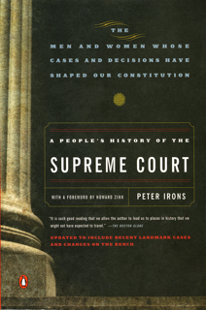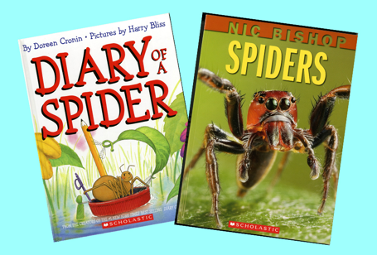I’ve forgotten what M was reading, but years ago, when we were newly together, I asked her whether she preferred fiction or non-fiction. The answer came quickly, “No question,” she said, “I don’t have time for fiction.” Just the facts, Jack. Since then our tastes and preferences have evolved, but at the time it signaled a startling difference between us.
We were both early readers, but I didn’t hit my stride until I encountered John Steinbeck in high school. M, on the other hand, was a voracious young reader. So were her parents, and they encouraged her. Anything with pages was OK. Kids books, Book of the Month Club selections, historical novels…especially those with a little romance. She was a late bloomer and hid in books. When she did bloom, she used them to hide from me and all the other bloom-snatching high school predators.
Today, we both read for pleasure and information. In this complex world we feel it’s our obligation as citizens to keep up. With the amount of information available over the Internet, finding reliable sources is a challenge. We read to stay informed, books, magazines and newspapers, but a well-researched book allows us to slow down and take a closer look at a subject.
Having said that, as a general rule I prefer fiction. There’s something special about taking part of an unfolding story. With non-fiction you generally know what happens and read to find out how or why. Fiction, unless you read the last pages first (as M does), pulls you in and takes you for a ride toward an unknown destination.
Readers need variety, and my latest non-fiction is Empire of Pain, the multi-generational horror story of the Sackler family, of their privately-held company, Purdue Pharma, and their Golden Ticket – Oxycontin. It lays out the history of how the second and third generations of the family developed, marketed, and capitalized on the drug that created a global drug crisis. Even before patent approval, the Sacklers were manipulating the FDA, and building a hard driving sales force to push the deadly pill to pain doctors, pharmacies, and pill mills. The result is the nationwide opioid death spiral. Driven by greed, the Sackler’s story is a thriller – repulsive and compelling at the same time.
For relief from the Sackler saga, I’ve been reading a book of ten short stories by James Salter. Salter was a fighter pilot first and a writer later. His first novel, The Hunters, is the best description of the stresses, pressures, and personal conflicts inside a wartime fighter squadron, but his novels covered everything from rock climbing to dysfunctional marriages. He is one of my favorite storytellers, and each of the stories in Last Night pulled me into a different kind of human drama. I couldn’t put it down.
Fiction v. non-fiction is not an either/or question. As you can tell, I usually have both going at the same time. I admire good writing wherever I find it, but there is something magical about the creation process–the making of a story where there was none. It’s a gift to draw from the imagination something that often seems more truthful and emotional than a “true” story. I’m thinking about Sophie’s Choice, the William Styron novel that makes me cringe and sweat every time I think of the scene on the Auschwitz train platform.
As a writer, I find it relatively easy to put together an essay—even one that is deeply personal. I know where it starts and ends. My job is to weave together a narrative that links the two. Fiction is a different animal. It’s terrifying and exciting to look at the blank page and know that everything that goes down has to come from your imagination. I’ve written a fair amount of fiction but always find it hard to free my imagination and come up with something original that will hold the reader’s attention.
Lately, I’ve been consumed by this term’s Supreme Court decisions—which, in turn, leads me back to non-fiction. I’m astonished and angry that the new conservative majority has turned a process that was once reasonably predictable into a retrograde move back toward the 1950s. I had a basic understanding of Constitutional Law from my law school days but the recent decisions have moved me to read more deeply into the Court’s history. I needed a refresher. I started with Linda Greenhouse’s The U.S. Supreme Court: A Very Short Introduction then launched into Peter Irons’ A People’s History of the Supreme Court (with a foreword by historian Howard Zinn). Along with my copy of The Constitution of the United States it was an immersion course.

Last week I commented on the recent cases with an essay called Supreme Madness… This week, I reminded myself that these cases are all stories with their own characters and unique sets of facts. It’s fascinating to dig into them. For instance, Jane Roe, of Roe v. Wade fame, was what we lawyers would call an unsympathetic plaintiff–an unsavory character with a long criminal record. Norma McCorvey, Jane Roe’s real name, was also a turncoat. After her successful pro-abortion appeal she traded sides and became an anti-abortion activist, claiming her involvement in Roe v. Wade was “the biggest mistake of my life.” A strange bedfellow, so to speak. You never know.
And, non-fiction can also be transformed into fiction. Last week’s Supreme Court “coach’s prayer” opinion was a classic example. Justice Gorsuch, who knew the true facts, completely distorted them to justify the reasoning he and the other conservative justices needed to arrive at the result they wanted. Gorsuch characterized the coach’s action as “a short, private, personal prayer” when one bystander remembered more than 500 followers gathered around him at his midfield devotion.
That’s how you create fiction from a non-fiction fact pattern. Rewrite the script, apply some mental jiujitsu, and presto-zipto you’ve created a completely different story. Hugo Black and Felix Frankfurter were heavyweights who went mano a mano as Court adversaries but gave us well thought out opinions. The conservative justices on this Court, are political operatives appointed to carry out a specific political agenda. Holmes, Brandeis, Frankfurter, Black, and Douglas were legal giants. This Court’s justices are just cogs in the political process. No wonder the Court’s favorability stands at 25% today.
I have to say, I learned as much about the law and how it works (or doesn’t) from To Kill a Mockingbird as I did from cases I studied in Constitutional Law. Atticus Finch explaining his actions to Scout is better than reading the Supreme Court opinions in Marbury v. Madison or Brown v. Board of Education.
And speaking of fiction, I’m looking forward to a novel about the life of a Black Supreme Court Justice. I picture him in his black robe confronting a group in white robes. It’s jam packed with affirmative action, porn, sexual harassment, pubic hair on Coke cans, and a mixed-race marriage. In spite of affirmative action and other benefits he derived from prior SCOTUS decisions, he vengefully votes to deny those benefits to others. He sulks silently on the bench for years then defies the odds, punches up, turns the tables, twists grievances into jurisprudence, violates norms, refuses to recuse, and stands by as his wife lobbies to prevent the peaceful transition of power. I can’t wait to see who writes it. Grisham? Maybe O’Reilly?
Fiction or non-fiction? We need both to be a well-rounded, educated society. I keep hoping to see the Sackler family in line at the food bank, Trump in an orange jumpsuit, and Clarence Thomas in a memory care unit, but at the moment that’s fiction. Still, the fantasy allows me to imagine a situation where fiction becomes non-fiction and I can stop worrying about the fate of democracy.
































Nice as usual Jack.
Speaking of SCOTUS non fiction did you read The Great Dissenter about John Marshall Harlan? Great story!
I agree with Hugh Spitzer (Seattle Times Sunday) that our present court wants to take us back to that era (1880-1937). Where is John Marshall Harlan when we need him?